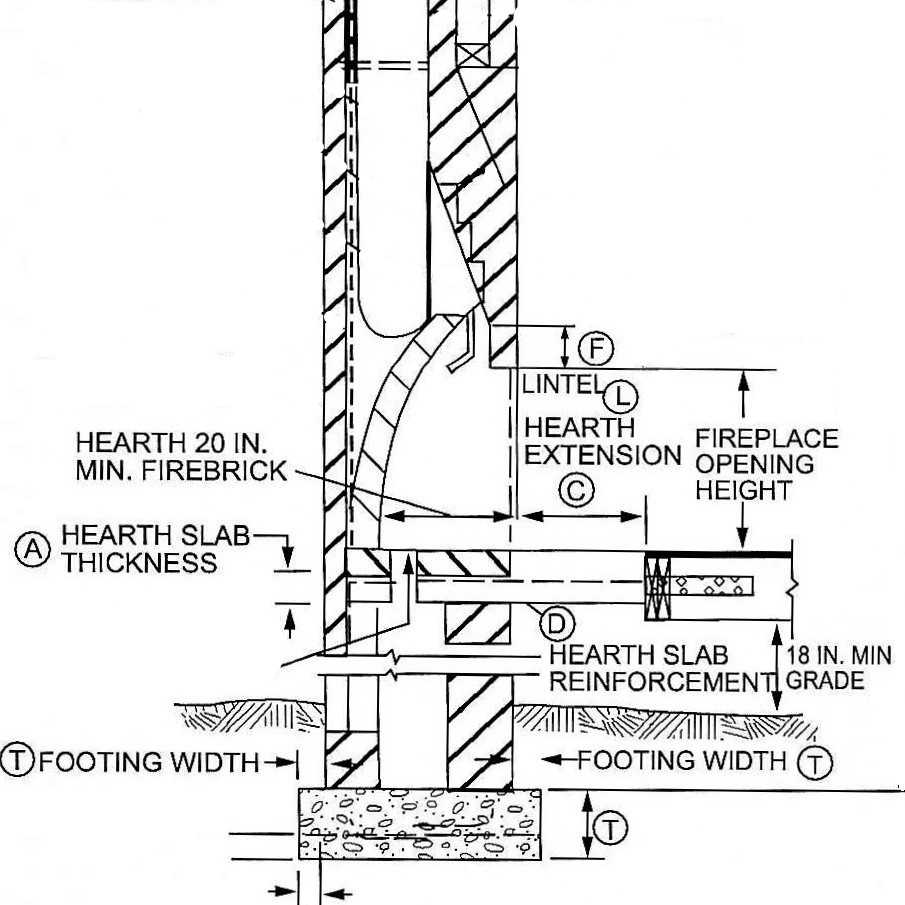The fire service affords you the opportunity to witness and observe things that a lot of engineers and even most people do not get the chance to see. An example of this is the situation where extended elevated temperatures combined with poor construction techniques to result in a structure fire.
I have personally observed several occasions where a structure fire was initiated due to improper construction of the fireplace hearth extension. The most recent one followed a multi-day cold snap, at least by South Carolina standards. The thermometer read 17 degrees F as I drove to the call of smoke in a residence in the early hours of a winter morning. The first on-scene crew radioed that smoke was present in the residence and in the crawl space underneath.
The fire in the crawl space and the wall cavity of the residence was extinguished and an investigation into the origin and cause of the fire began. The origin was traced to the subfloor that was underneath the hearth extension of the fireplace. An interview with the owners indicated that they had been continuously tending a fire in the fireplace for approximately three days due to the colder than normal temperatures that the region was experiencing.
An inspection of the surface of the hearth extension in the living space above, and the underside of the same in the crawl space, revealed that the hearth extension was improperly constructed. The hearth extension was supported by the wooden subfloor without providing proper clearance to combustibles. So, while the fireplace extended through the floor of the residence to the ground below, the subfloor was directly below the hearth extension, in close proximity to the hearth.
The construction of the hearth extension as seen in this structure fire was a violation of the International Building Code and the International Residential Code. A portion of the construction details from the codes is shown below.
Review of the diagram shows that the hearth extension is supported by the chimney foundation. The hearth extension is not supported by the combustible subfloor as it was in the structure discussed above. Additionally, the length that the hearth extension protrudes beyond the firebox is also prescribed in the building codes.
One of the key reasons that the hearth extension should be a certain dimension and also supported by the noncombustible foundation is to prevent the type of fire we had here. The ignition source we are attempting to prevent is pyrolysis, which is defined by the National Fire Protection Association (NFPA) as “The chemical decomposition of a compound into one or more substances by heat alone; pyrolysis often precedes combustion”. Simply put, a combustible material is exposed to elevated temperatures for extended periods of time and a fire results. These temperatures are not high enough to immediately cause ignition, like say an actual flame would. However, given enough time, these temperatures cause the combustible material to break down chemically and eventually ignite.
The owners had lived in the residence for a number of years, and per their interview they have burned many fires in the fireplace over the years. This fire ignited after the 3rd day of maintaining a fire. They were even sleeping in the living room to enjoy the warmth of the fireplace and kept the fire tended throughout the night. The burn pattern visible from the crawl space on the underside of the subfloor indicated the subfloor ignited and then the fire progressed into the wall cavities of the residence. Fortunately, the occupants were awakened by the smoke detectors in the residence and the fire was extinguished without major damage to the residence.
As mentioned earlier, I have witnessed this phenomenon on more than one occasion. In each instance, the hearth was improperly constructed by basically supporting the hearth on the wooden subfloor. In each of the cases I have observed, this had worked for quite some time until one day when conditions were just right and ignition occurred.
Construction techniques prescribed in the building codes can prevent situations like the one described above. Thorough investigations after a fire can reveal defects like this as well.
Chad Jones, PE, CFEI, CMSE has a Bachelor of Science in Mechanical Engineering from Clemson University. Chad has over 20 years of engineering experience including mechanical, process, and manufacturing engineering. This work has included equipment design, machine safeguarding, cost estimating and safety compliance. Chad also has over 10 years of commercial, industrial, and residential HVAC and plumbing design experience. Chad is a Certified Fire and Explosion Investigator and IFSAC certified Firefighter II in Greenwood County, South Carolina.




